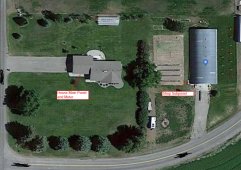First time poster. Thanks for your patience.
I've got a house in the country in Idaho. We use lots of power because I water two acres with a well and have nothing but electricity for heat. Fortunately, I have a big shop (100'x40' metal quonset hut) near my house, and I'm planning to mount my array on it with about 60 panels and four inverters.
Just getting started with design, but my question is about where what goes where.
Since my shop is a bit removed (250' or so) from the breaker panel on the far side of my house, I'm trying to understand what should go in the shop and what should go in the house. My understanding is that I don't want to send DC power that far, so the inverters should go inside the shop. Does that mean that I'll be sending four sets of AC wires to the house breaker panel for grid tie?
Also, I plan to add battery backup but not till later. Can the battery backup go in the house near the panel grid tie? Or will it need to go in the shop near my inverters?
I've got a house in the country in Idaho. We use lots of power because I water two acres with a well and have nothing but electricity for heat. Fortunately, I have a big shop (100'x40' metal quonset hut) near my house, and I'm planning to mount my array on it with about 60 panels and four inverters.
Just getting started with design, but my question is about where what goes where.
Since my shop is a bit removed (250' or so) from the breaker panel on the far side of my house, I'm trying to understand what should go in the shop and what should go in the house. My understanding is that I don't want to send DC power that far, so the inverters should go inside the shop. Does that mean that I'll be sending four sets of AC wires to the house breaker panel for grid tie?
Also, I plan to add battery backup but not till later. Can the battery backup go in the house near the panel grid tie? Or will it need to go in the shop near my inverters?




